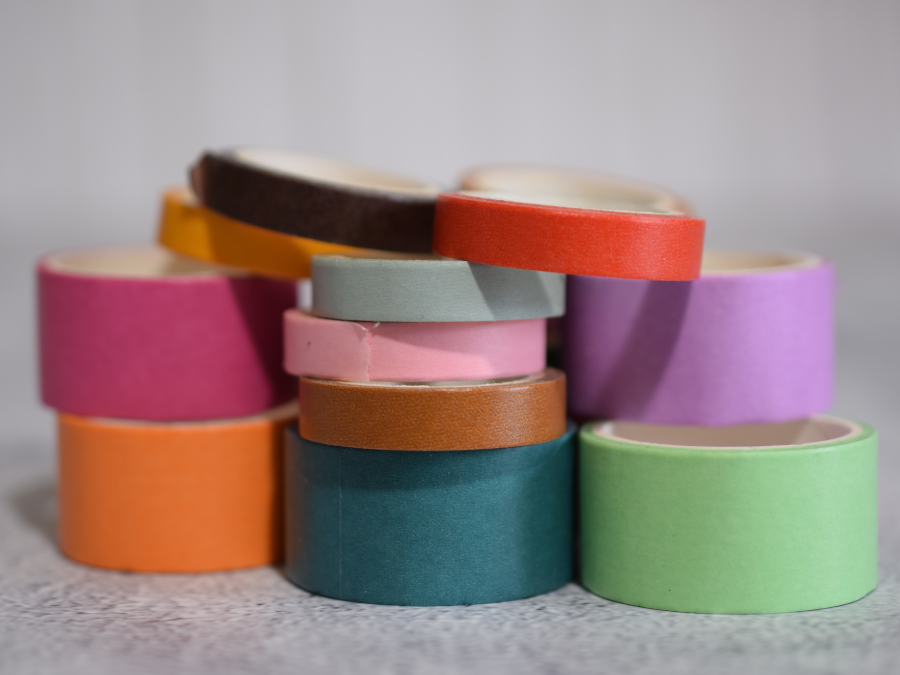Unconventional Tools: Sewing Beyond the Ordinary
Hello, Snazzie People!
When it comes to sewing, we often think of our trusty sewing machines, needles, and thread as the standard arsenal. But what if I told you that your sewing adventures could be enhanced by some rather unconventional tools? These unexpected items, often found around the house or tucked away in your drawers, can be game-changers in your crafting journey. In this post, we’re about to embark on a thrilling sewing adventure, exploring an array of unusual tools that will leave you inspired and intrigued. Let’s dive into the world of creative sewing solutions!
If you would like to learn about more traditional sewing tools to get started check out my post: Essential Tools for Every Beginner Sewist
Clamps

Clamps are tools used to hold objects firmly in place. They come in various types, including spring clamps, C-clamps, and bar clamps, and are commonly used in woodworking and metalworking.
Clamps are great in the sewing room. If you have a large amount of heavy fabric spilling over your cutting area, there’s a chance it can slip off or stretch the fabric. Clamps are a perfect way to keep the fabric in place.
I also like to use clamps to hold any materials such as paper or vinyl that may be been on a roll and it wants to curl while I am trying to work.
Erasable Pen and Markers

Erasable pens and markers are writing tools that use ink that can be easily erased, making them ideal for sketching and drawing. They are commonly used by artists and designers.
The magic of an erasable pen or marker is that the heat from the friction of the eraser is what makes the marks disappear. This means that an iron can also make the marks disappear.
I like to use erasable markers for marking fabrics that are hard to mark with tailor’s chalk or other sewing marking pencils. You do have to be careful because the marks can come back with cold and while erasable markers can wash out they can stain lighter fabrics.
Washi Tape

Washi tape is a decorative adhesive tape made from Japanese rice paper. It comes in a wide range of colors and patterns and is often used in crafts, scrapbooking, and decorating.
My favorite use for washi tape is marking my seam allowance on my sewing machine. I like to work in a 3/8″ seam allowance for garment construction but my main machine doesn’t have a 3/8″ mark. Luckily I always have 1/4″ washi tape on hand. I just line it up to the left of the 5/8″ mark and I have a perfect 3/8″ mark.
Bobby Pins

Bobby pins, or hairpins, are hair accessories used to secure hairstyles. They are typically U-shaped and come in various sizes and colors.
Have you ever used a safety pen to turn a tube and you find that the fabric gets stuck in the safety pin or maybe the safety pen comes undone in the middle of the tube? Try a large bobby pin instead. Just clip a small hole at one end of the tube (within the seam allowance) slip the bobby pin in the hold and use it to turn the tube just like you would a safety pin.
Shoelaces

Shoelaces, also known as shoe strings, are cords used to fasten and tighten shoes. They come in different materials, lengths, and styles to suit various types of footwear.
I always hang on to old shoelaces, they are another unexpected tool for turning tubes. Fasten a safety pin to one end of the shoelace. Feed it through the tube leaving part of the other end of the shoelace still sticking out of the tube. Sew the other end of the tube closed securing the shoelace. I like to use a long basting stitch because it’s easier to unpick when you’re done turning. I do lock the stitch by going back and forth several times. Now pull on the free end of the shoelace and turn the tube right side out. When you are done, unpick the stitches and set your shoelace aside for future use.
Washers and Nuts

Washers and nuts are hardware components commonly used in construction and mechanical applications. Washers provide a smooth surface and distribute load, while nuts secure bolts and screws in place.
Washers and nuts are perfect pattern weights. Larger washers have more weight and are great for larger areas, but if you need to hold down smaller areas such as corners, nuts are just the right size and weight. They also have the advantage of taking up a lot less room than other pattern weights. I keep a small bowl of them on my cutting table.
Dowels

Dowels are cylindrical rods typically made of wood, metal, or plastic. They are used in woodworking for joint reinforcement and alignment.
I like to use dowels to press flat the seams of tubes such as bag straps. (Can you tell I have spent a lot of time sewing tubes?) I slide the dowel in the tube lining up the seam along the top of the curve and press with the iron. This makes the seam nice and flat and easier to press everything into place.
Wood Scraps

Wood scraps are small leftover pieces of wood from various woodworking projects. They can be repurposed for crafting, building, or as kindling for fires.
If you have ever used a clapper in sewing you will know how great they are for pressing. Clappers are made of wood and the wood absorbs any moisture from pressing, making everything nice and flat. Before I got myself some clappers I used scraps of wood. These scraps weren’t have heavy as a clapper but they did absorb the moisture and I just had to add a little extra pressure to get the same effect as a clapper.
Exam Table Paper

Exam table paper is a disposable, paper-like material used to cover examination tables or surfaces in medical and healthcare settings. It helps maintain cleanliness and hygiene during examinations.
Exam table paper is a staple in my sewing room. You could probably get it at a local medical supply store but I picked up a case of it on Amazon several years ago and I still have several rolls left.
It’s slightly sheer, making it a perfect tracing paper. I trace all my garment patterns and exam table paper is a perfect inexpensive option. Because it’s thin it doesn’t take up a lot of room in your pattern storage.
Exam table paper also has plenty of other uses. Use it instead of tissue paper for wrapping gifts. I’ve used it to add filler to the bags I was selling at craft shows and we used it to wrap my mom’s fragile items when we moved her.
Eyebrow Spoolie

An eyebrow spoolie is a small brush with soft bristles used for grooming and shaping eyebrows. It helps distribute and blend eyebrow products.
One day I was going through some old makeup brushes under my bathroom sink and when I picked up a spoolie I had an epiphany. The spoolie is perfect for cleaning out hard-to-reach places in a sewing machine. Pipe cleaners are also great but the spoolie is a little more rigid and the perfect tool to add to your sewing machine cleaning.
Golf Tees

Golf tees are small pegs used in golf to elevate the ball off the ground for the initial drive. They come in various lengths and materials.
I use golf tees to keep my bobbin and spools together. Since I store everything on a peg board this really only works for my taller spools for storage but if I’m working with several colors of thread I like to keep them organized and together with a golf tee.
Hair Bands

Hair bands, also known as hair ties or hair elastics, are accessories used to tie and secure hair into ponytails, buns, and other hairstyles.
I like to keep my bobbins from unraveling by covering them with hair bands. My favorite hair bands are the tiny little hair ties for babies. They are the perfect length and width for a bobbin. I always have a bunch of them next to my sewing machine.
Hemostats (Forceps)

Hemostats, or forceps, are medical instruments used for grasping and clamping blood vessels to control bleeding during surgery or medical procedures.
It’s another turning tool. I have a set of hemostats in several sizes. They’re great for turning very tight areas such as a pointed collar. I got the idea from someone who made small stuffed animals. The fact that the hemostat can clamp onto the fabric and lock frees up your hands for the actual task of turning the piece.
Fabric Scraps

Fabric scraps are small leftover pieces of fabric from sewing or quilting projects. They can be repurposed for patchwork, crafting, and embellishments.
Sometimes when you are sewing a very thin and slippery piece of fabric you might find that it wants to bunch up under your sewing foot. If this happens, you can add a “leader” piece of fabric to get your main piece started. Thicker leader pieces are also useful to stabilize the sewing foot when you start to sew a thick piece of fabric. It’s similar to a tool called a “hump jumper” but if your needle hits the scrap fabric it’s less likely to break.
Fabric scraps are also great for practicing stitches. When you cut out a sewing pattern, hold on to the scraps just in case you need to adjust your tension and stitch length. I almost always make a few practice button holes on scraps before I finally make one on the garment. (Button holes scare me!)
Knitting Needles

Knitting needles are long, slender tools used in knitting to create fabric from yarn. They come in various sizes and materials, with one pointed end and one rounded end for manipulating stitches.
Knitting needles can be pretty versatile in the sewing room. Larger, thicker knitting needles are great for pushing out corners. I keep a couple of large wooden knitting needles on my cutting table for this. Thinner knitting needles can be a little sharp and may not be great for pushing out corners but they could be used to pock a hole in fabric where you need to install a snap or poking a hole in a pattern piece to you and mark your fabric later.
This just goes to show you that crafty people are great at thinking outside the box. We see possibilities in unexpected places. Whether you’re a seasoned seamstress or just starting your sewing adventure, I hope you’ve been inspired to look beyond the conventional and experiment with newfound tools of the trade.
Now I want to hear from you! What kind of unusual sewing and crafting tools do you use?
Good luck with your sewing adventures!
Don’t forget to check out Essential Tools for Every Beginner Sewist to learn about other sewing tools.
Kelly







